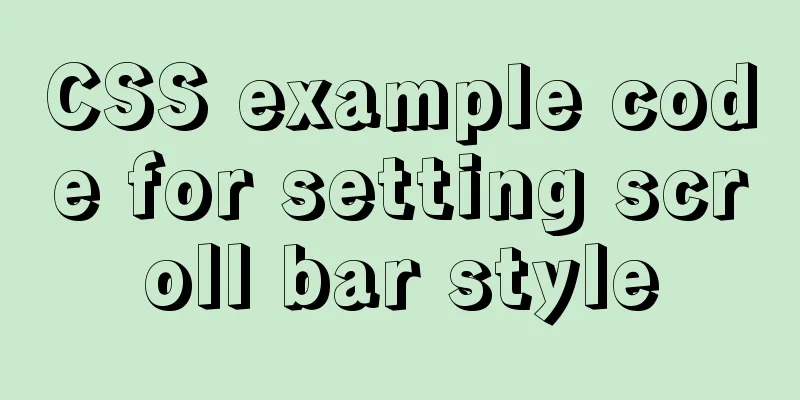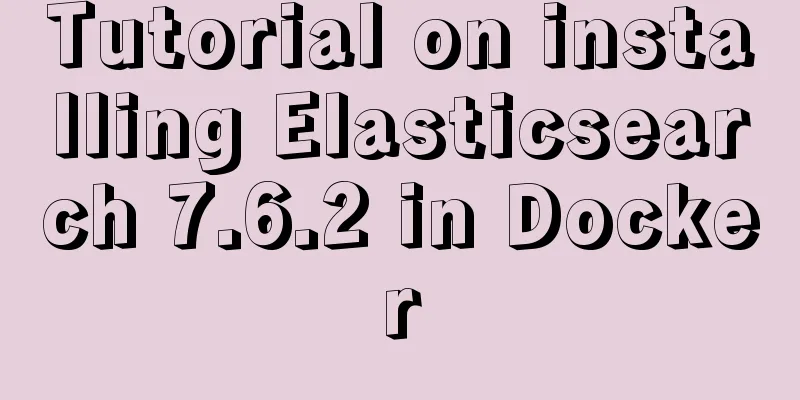CSS example code for setting scroll bar style

|
The CSS implementation code for setting the scroll bar style is as follows: •::-webkit-scrollbar The entire scroll bar
/*Define the scroll bar height and width and the background height and width corresponding to the size of the horizontal and vertical scroll bars respectively*/
::-webkit-scrollbar
{
width: 16px;
height: 16px;
background-color: #F5F5F5;
}
/*Define the inner shadow + rounded corners of the scroll bar track*/
::-webkit-scrollbar-track
{
-webkit-box-shadow: inset 0 0 6px rgba(0,0,0,0.3);
border-radius: 10px;
background-color: #F5F5F5;
}
/*Define the inner shadow + rounded corners of the slider*/
::-webkit-scrollbar-thumb
{
border-radius: 10px;
-webkit-box-shadow: inset 0 0 6px rgba(0,0,0,.3);
background-color: #555;
}Detailed settings Defining scroll bars uses pseudo-elements and pseudo-classes, so what are pseudo-elements and pseudo-classes? Everyone should be familiar with pseudo-classes: link, :focus, :hover. In addition, many pseudo-class selectors have been added to CSS3, such as :nth-child, :last-child, :nth-last-of-type(), etc. You have seen pseudo-elements in CSS before: :first-line, :first-letter, :before, :after. Then in CSS3, the pseudo-elements were adjusted, and a ":" was added on the previous basis, which means now it has become "::first-letter,::first-line,::before,::after", and CSS3 also added a "::selection". Two "::" and one ":" are mainly used to distinguish pseudo-classes and pseudo-elements in CSS3. Webkit's implementation of pseudo-classes and pseudo-elements is very powerful. The scroll bar can be defined as a page element and combined with some advanced CSS3 properties, such as gradients, rounded corners, RGBa, etc. Then if you need to use pictures in some places, you can convert the pictures into Base64, otherwise you have to load multiple pictures every time, increasing the number of requests. Any object can be set: border, shadow, background image, etc. The created scroll bar will still complete its interactive behavior according to the settings of the operating system itself. The following pseudo-classes can be applied to the above pseudo-elements. It's a little complicated. You can see the first demo for details on how to write it. There are also comments there.
:horizontal
//The horizontal pseudo-class applies to any horizontal scroll bar: vertical
//The vertical pseudo-class applies to any vertical scroll bar: decrement
//The decrement pseudo-class applies to buttons and track pieces. A button or track fragment that represents a decrement, such as a region or button that can move a region up or to the right: increment
//The increment pseudo-class applies to buttons and track pieces. Indicates an incremental button or track fragment, such as a region or button that can move a region down or to the left: start
//The start pseudo-class applies to buttons and track pieces. Indicates whether the object (button track fragment) is placed in front of the slider: end
//end pseudo-class applies to buttons and track pieces. Indicates whether the object (button track fragment) is placed behind the slider: double-button
//The double-button pseudo-class applies to both buttons and track pieces. Determines whether the track ends at a pair of buttons. That is, the orbital debris is next to a pair of buttons together.
:single-button
//The single-button pseudo-class applies to both buttons and track pieces. Determines whether the end of the track is a button. That is, the orbital fragments are next to a separate button.
:no-button
The no-button pseudo-class indicates that there is no button at the end of the track.
:corner-present
//The corner-present pseudo-class indicates whether the corner of the scroll bar exists.
:window-inactive
//Applicable to all scroll bars, indicating the area containing the scroll bar when the focus is not on the window.
::-webkit-scrollbar-track-piece:start {
/* scroll bar upper or left half */
}
::-webkit-scrollbar-thumb:window-inactive {
/*When the focus is not in the current area slider state*/
}
::-webkit-scrollbar-button:horizontal:decrement:hover {
/*State when the mouse is on the button below the horizontal scroll bar*/
}Summarize The above is the example code of setting scroll bar style with CSS introduced by the editor. I hope it will be helpful to everyone. If you have any questions, please leave me a message and the editor will reply to you in time. I would also like to thank everyone for their support of the 123WORDPRESS.COM website! |
<<: Automatic failover of slave nodes in replication architecture in MySQL 8.0.23
>>: Install Docker on Centos7 (2020 latest version available, just copy and paste)
Recommend
Detailed explanation of JS browser event model
Table of contents What is an event A Simple Examp...
Detailed tutorial on deploying Django project using Docker on centos8
introduction In this article, we will introduce h...
How to add a pop-up bottom action button for element-ui's Select and Cascader
As shown in the figure below, it is a common desi...
HTML form tag tutorial (1):
Forms are a major external form for implementing ...
Two ways to reset the root password of MySQL database using lnmp
The first method: Use Junge's one-click scrip...
Implementation of Vue package size optimization (from 1.72M to 94K)
1. Background I recently made a website, uidea, w...
MySQL column to row conversion and year-month grouping example
As shown below: SELECT count(DISTINCT(a.rect_id))...
The difference between ID and Name attributes of HTML elements
Today I am a little confused about <a href=&quo...
Detailed explanation of Windows time server configuration method
Recently, I found that the company's server t...
Summary of the use of CSS scope (style splitting)
1. Use of CSS scope (style division) In Vue, make...
Detailed explanation of command to view log files in Linux environment
Table of contents Preface 1. cat command: 2. more...
What we can learn from Google's new UI (pictures and text)
The most significant website change in 2011 was Go...
js implements the classic minesweeper game
This article example shares the specific code of ...
Nginx+FastDFS to build an image server
Installation Environment Centos Environment Depen...
The role and methods of information communication in website visual design (picture and text)
Contemporary web visual design has gone through th...









